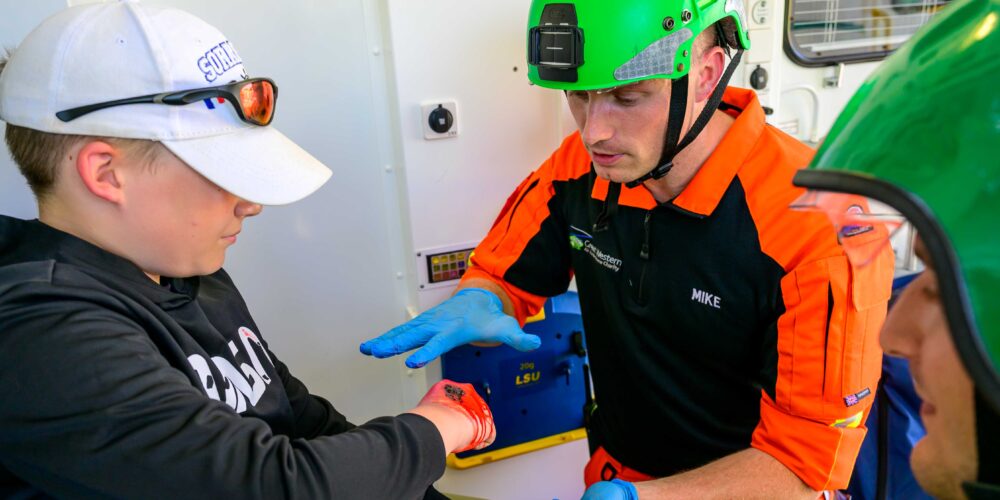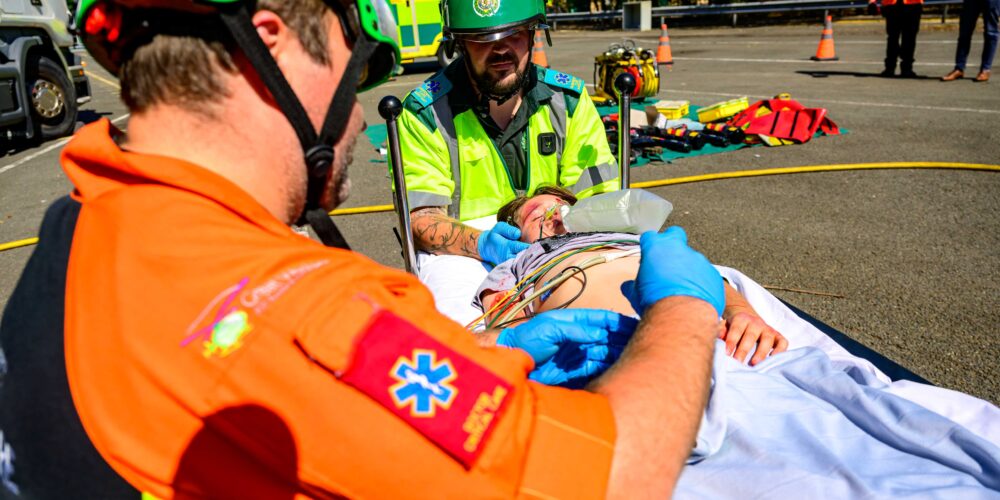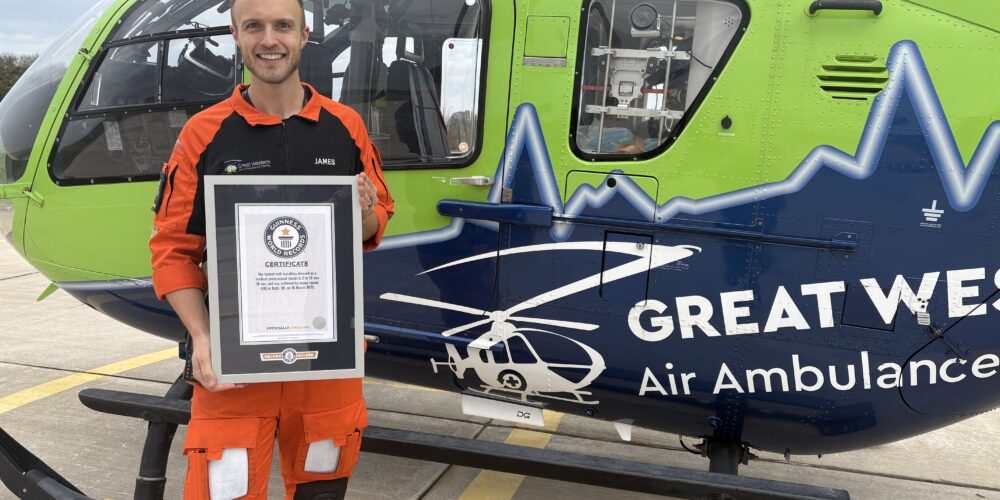
Why we’re set up to make a difference to young patients
February 23, 2022
Teamwork Saves Steve’s Life
February 25, 2022Have you ever wondered if we take a different approach when responding to young patients? In terms of whether we do or don’t respond, the answer is no — we’ll respond to anyone who needs our help whether they’re large or small, young or old.
But there are some differences around how we treat our littlest patients, and how we feel about it.
Our strategy for caring for babies and children
The overall strategy is simple. We do it. We respond to patients in need, whatever their age. And we do it as quickly, and with as much expertise, as we can.
Our strategy includes:
- Having a diverse team, including those with neonatal and paediatric specialist knowledge and skills
- Sharing knowledge, resources, and training
- Investing in the right equipment
“At Great Western Air Ambulance Charity (GWAAC) we are incredibly lucky to have an outstanding level of expertise within the team. James Yates is one of our Specialist Paramedics in Critical Care (SPCC) who job shares between GWAAC and a neonatal retrieval team. Doctor James Tooley is a neonatologist who also works with the retrieval team as well as in hospital. Together, the two Jameses have pushed GWAAC forward with our provision for paediatric and neonatal practices.”
Pete Reeve, SPCC, GWAAC.
At GWAAC, every crew member brings a specific set of skills to the team from which others can learn. As Doctor Tooley puts it, “training speeds up treatment.” And when it comes to treating younger patients, it’s not just about bringing advanced and immediate care to a scene, it’s also about providing reassurance and a sense of calm to the family of the patient, and to others in attendance.
Doctor Tooley says: “Advanced clinical decision-making is what we’re good at doing. It’s nice to share our experience with the ground paramedics and help guide processes where we can. Sometimes we can do that on route to a job.”
How we prepare
According to SPCC James Yates, preparing to attend to a baby or young patient, “is not dramatically different to how we prepare for any other patient. There’s always a discussion on-route around logistics and a potential course of action.”
James says: “Having that mental model in your head is important so you can act quickly. Having said that, you also need to be ready to break away from your pre-planning should circumstances change.”
As with all call-outs, the crew will undertake calculations regarding equipment and medication. One bespoke resource that is proving invaluable, is the Page for Age handbook — it outlines what medications and quantities can be given to different ages, and it benchmarks against normal parameters.
In terms of preparing emotionally, the crew agrees that responding to a child or baby can be more challenging than a call-out to an adult. It’s not so easy to adopt coping strategies such as isolating that person as a patient. James says, “A young patient usually comes with an emotional family and it makes you realise how integral that baby or child is to the family.”
Our equipment
Having the right equipment is one way of making sure we’re well prepared and set up to make a difference to young patients.
“We introduced transwarmers (a heated pad onto which newborn babies can be placed to keep them warm while we treat them), ventilation masks specifically sized for newborn and pre-term babies, and umbilical venous access (where a cannula can be placed into the umbilical cord of a newborn child to give drugs and fluids).
We have also started carrying specifically sized equipment to measure carbon dioxide levels in exhaled air and filters to be used when we ventilate very small children.”
Pete Reeve, SPCC, GWAAC.
Providing reassurance
The combined skills of our Critical Care Doctors, Advanced Practitioners, and Specialist Paramedics means we can bring the expertise of a hospital Emergency Department to the scene of a critically ill or injured patient, whether young or old. These skills can make the difference between life and death and the reassurance the team brings to the families involved is invaluable.
Enhancing the capabilities of the crew in neonatal and paediatric care means that on the rare occasions these skills are required, the team feels confident and empowered to make judgments, take action, and reassure those around them.
Find out more about our specialist equipment, specialist crew, and how we share our knowledge on treating babies and children.


This image was captured in a training simulation
Advanced clinical decision-making is what we’re good at doing. It’s nice to share our experience with the ground paramedics and help guide processes where we can. Sometimes we can do that on route to a job



